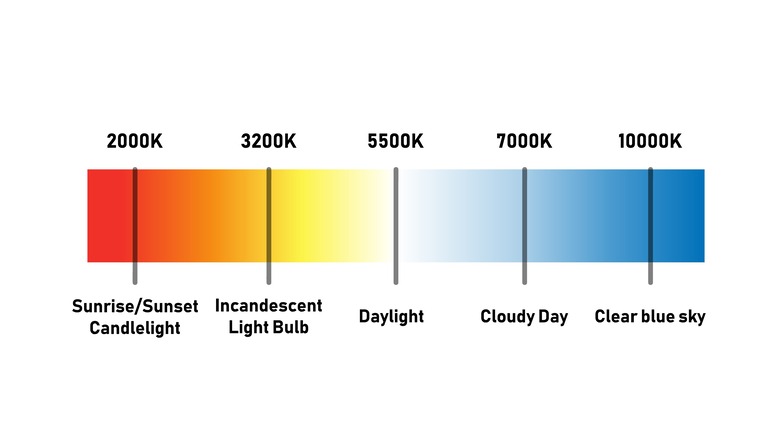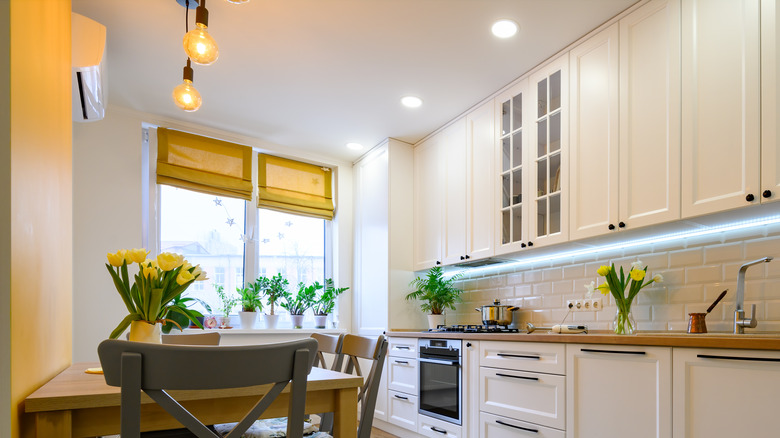How To Choose A Light Bulb Color That Will Make Your Paint Colors Shine
If you've ever painted a room before, perhaps you've heard that paper paint swatches are not enough to determine what the color will look like. Instead, you should apply two coats of a small amount of paint to an area of your wall. Maybe you've wondered why this is the case. This is because lighting dramatically affects how a color looks on the wall. One wall could look completely different during various times of the day if natural light is shining on it. Not only that, but artificial lighting from light bulbs will also affect the shade's undertones.
According to The Decorologist, different light bulb colors, whether warmer or cool-toned, significantly impact how wall paint appears. Choosing the wrong bulbs may take away from your home's appearance, which is why it's essential to understand the different types of light bulbs and how to choose the right one to complement your specific paint color. Below, you'll find information on both these topics.
Understanding the Kelvin scale
The color of a light bulb is determined by its number on the Kelvin (K) temperature scale. According to Lowe's, bulbs with a higher number will appear more white or blue, while those with a lower number will appear more yellow or red. In other words, a higher Kelvin number means a cooler tone, while a lower number means a warmer tone.
Four main types of light bulbs are commonly used in homes: soft white (2700K to 3000K) appears yellowish, warm white (3000K to 4000K) is between white and yellow, bright white (4000K to 5000K) is between white and blue, and daylight (5000k to 6000k) appears bluish. According to Kylie M. Interiors, bulbs underneath 2500K will appear more orange or red, and those above 4000K will start to look blue or green. Additionally, it's essential to understand that if you need more light in a particular area like a workspace or a kitchen, increase the wattage, not the Kelvins, per The Decorologist. Doing this will make your space brighter without affecting the bulb's color.
How to choose the right bulb color
According to Kylie M. Interiors, extremely cool light bulbs, or those above 3500K, should never be used in the home. This is because cooler tones will take away from the warmth on your walls and may make your space feel uninviting. Additionally, they say never to go under 2500K, as this could make your room appear too red. Therefore, the best bulbs are soft white or warm white tones. If you have warm paint colors in your home, warm light bulbs will enhance your walls. Lights say that soft white light bulbs give off a warm and natural appearance that makes warm-toned walls appear more intense and cooler-toned walls appear less intense. Nevertheless, while cooler tones may appear slightly muted in warm light, this isn't necessarily negative — it could make your home appear more interesting and dynamic.
However, if you dislike the appearance of yellow light and have cool-toned walls, you should choose bulbs between 3000K and 3500K. Cool-toned walls will look closer to their actual color when paired with light bulbs above 3500K, but they will also appear uninviting. If you have white walls without an obvious undertone, you can make your home appear warm or cool, depending on your chosen bulbs.


